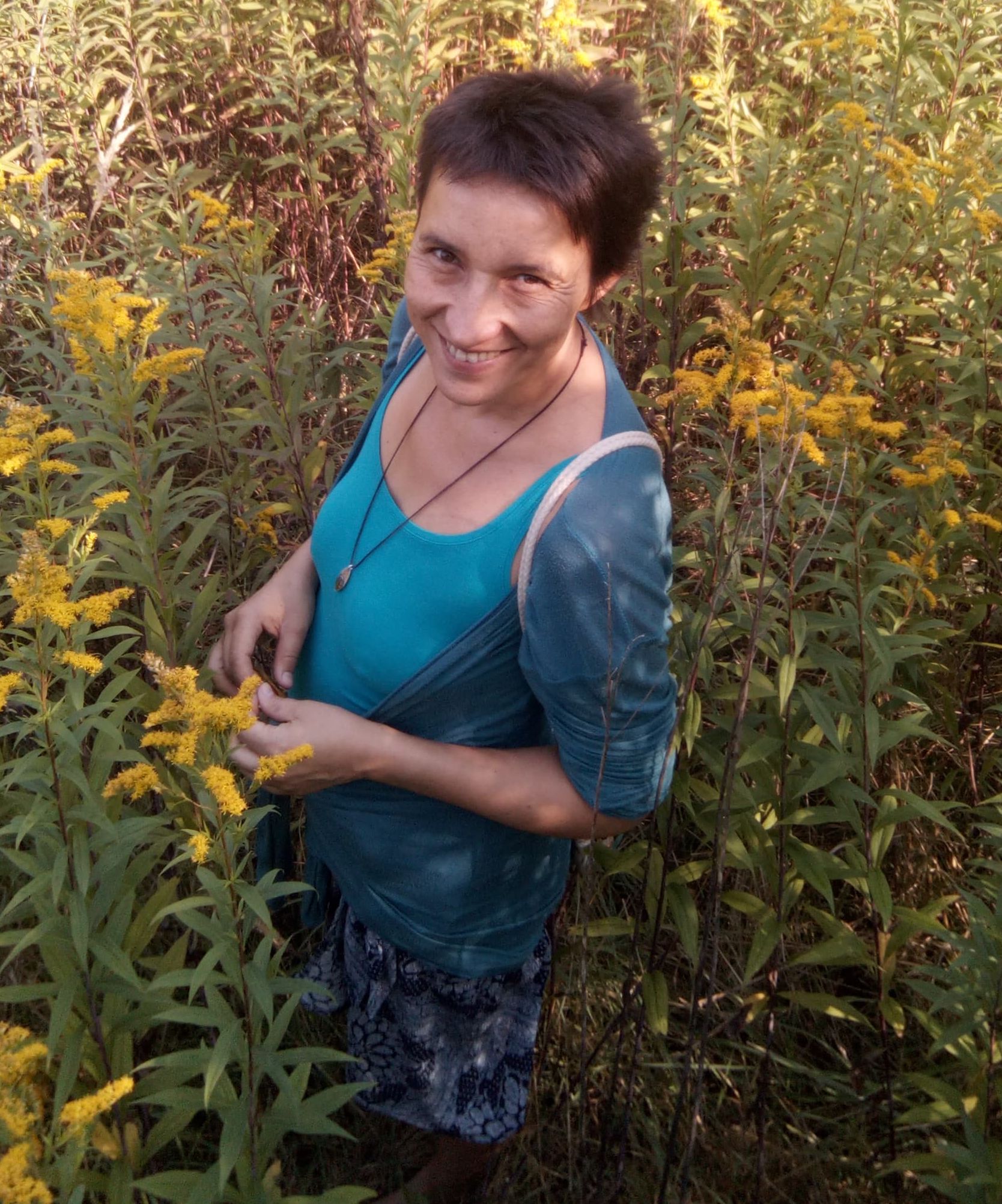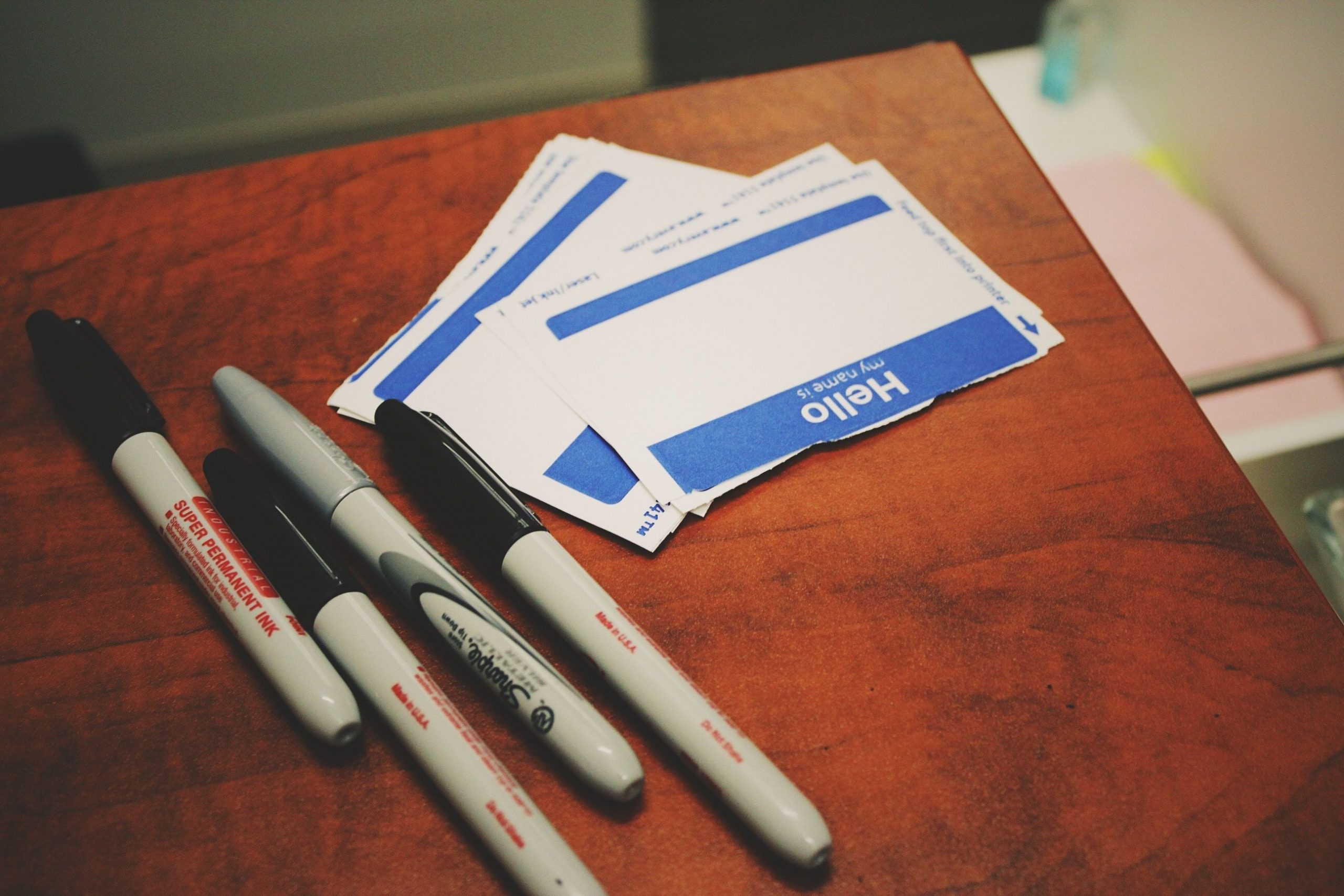SZKOLENIA
A NAIL in the WALL,
a short story about
USING TOOLS in the trainer’s work.
Maja Wąsała
Monika Grzesiak-Chmura
The article you are about to read raises the issue of creating safety and connection in a training group. We present two simple activities that you can start your training with, and we will focus on the following questions:
- How to build safety in a training group?
- What should participants know about each other? If anything.
- How to design training exercises to create a safe space during the training?
NAMES
Usually at the beginning of training the trainer gives out sticky notes or name tags and asks participants to write their names on it. Usually he also offers an activity in which everyone has the chance to learn the names of other participants.
The purpose of these activities is to bridge the gap between the trainer and participants and between the participants.
It makes the atmosphere of the training friendlier, closer and safer.
The main aim of the name games introduced during the training is creating safety and connection in a training group.
What happens, however, if, after introducing the name games, the trainer neglects the rules set at the very beginning and:
- addresses the participant impersonally,
- does not react when participants address themselves impersonally,
- does not pay attention to the fact that the participants lost the name tags during the following training days and they do not remember their names?
When starting the training, before handing out name tags, ask yourself the following questions:
- How will I remember the participants’ names, especially if I struggle with memorizing them?
- Is it important for me that the participants address each other by name?
- How will I remind about this form of communication?
True, trivial questions. Yes. But what will happen if you encourage participants to stick to these rules and as a trainer stop obeying them at some point of the training?
Your words are just words. They become powerful when they are supported by your action.
A trainer who says something and does something completely different becomes unreliable, distant and might be taken as disrespectful. As a trainer you are supposed to be a consistent and credible leader. And you are responsible for the training you create.

Photo by Kelly Sikkema on Unsplash
When starting the training, before handing out name tags, ask yourself the following questions:
How will I remember the participants’ names, especially if I struggle with memorizing them?
Is it important for me that the participants address each other by name?
How will I remind about this form of communication?
Of course, a lot can justify you: working under stress, new participants and their expectations, names that are difficult to remember, especially if you work with international participants, too much focus dedicated to the tasks. As you become aware of these challenges, think what you can do to prevent difficulties or conflicts in the training room.
Before you introduce any rule to the participants, think whether you as a trainer will be able to stick to it.
Perhaps at the very beginning of the training it would be useful to arrange more games helping people remember names and bringing them closer?
Or it might be helpful to ask participants to say their name before they share something to the group.
The most important step is to embrace your weaknesses instead of creating a false image of yours, and thus a low sense of trust and safety of participants.
Although it may seem trivial, be yourself instead of playing someone you can’t be at the moment. YOU are the main tool during a training.

Photo by Barn Images on Unsplash
YOU are the main tool during a training.
EXCHANGE
You can build safety and create connections in a group by providing games in which participants get to know each other. One example game is called AUTOGRAPHS. A simple tool that we recommend.
The goal of this game is to find in the group people who meet certain criteria, for example, speak 5 languages or know someone famous. Each participant receives a card with questions and mingles with others, looking for people who fulfil specific criterion.
This is one of the games that, when introduced improperly, can hinder the learning process of the group and lead to the situation where participants start judging themselves or comparing to others. This might happen if you do not present the goal of this game or do not summarise it. By neglecting to do so, you can unintentionally create a situation similar to the stock exchange. Participants will simply lie not be worse than others. Instead of sharing information about themselves they will build false images and detach from each other.
But with this game you can also build a safe space where it turns out that no one can speak five languages, no one has ever been to the desert or greeted Obama with a handshake. By using this game you can also create a feeling of belonging of everyone to the group.

Photo by Jehyun Sung on Unsplash
A trainer who says something and does something completely different becomes unreliable, distant and might be taken as disrespectful.
As a trainer you are supposed to be a consistent and credible leader.
And you are responsible for the training you create.
Do you want the activity you introduce to build safety in the group?
You need to bear two things in mind. First is being aware of the goal of the activity. Second are the questions you will ask. Make sure they do not lead to competition, judgements or comparisons. Each activity is good, it is crucial to ask yourself questions that will make it a good tool:
- How will I present the purpose of the exercise? What is the goal of this activity? Is it getting to know each other? Is it spotting diversity of the group? Is it becoming aware of the group’s potential?
- How do I intend to react in a situation of participants’ withdrawal or feeling judged or worse? Are you responsible as a trainer for the well-being of participants who lack self-esteem? What are your competences? How do you set limits on your responsibility? Do you play a lifeguard, mentor, mother or coach? Or maybe just a person who is fully present during the training and openly responds to what you observe? You notice and describe the difficulties, thus reducing the tension that most often results from communication errors.
- How will I summarize the information collected by the group? How will I use them?

Image by Michael Schwarzenberger from Pixabay
If you want the participants of your training to feel fulfilled and satisfied, on leaving the training, always think about what your nail is for.
Refer to previous exercises, summarize the learning outcomes.
Constantly refreshing and referring to previous assignments and their outcomes is a solid foundation of the group process.
SUMMARY
Do you remember what it is like when in the first scene of the film the main hero nails a nail into the wall? It immediately raises expectations and questions, what will happen next? What will hang on the nail? Or who? And why has it been nailed?
If you want the participants of your training to feel fulfilled and satisfied, on leaving the training, always think about what your nail is for. Refer to previous exercises, summarize the learning outcomes. Constant refreshing and referring to previous assignments and their outcomes is a solid foundation of the group process.
Be aware of what you are doing. Otherwise at the end of the training you will end up with a nail in the wall. Without the content you intended to bring there.
Remember that before you offer any assignment, you must know its purpose.
The destination is the key to every journey, otherwise you will end up somewhere you did not plan, but where your uncertainty and lack of awareness led you. At the same time, you will create tension and conflict in the group that you will have to face during the training.

About the Author:
Maja Wąsała is an adult educator in the area of communication skills for adults. She is really fond of NVC methodology and working with beliefs. She believes that the way we think creates our lives. So she works also with transforming emotions to make them our friends, no enemies. Maja helps trainers to improve their skills by using consciously the Colb’s cycle.
She’s a certified speech therapist (University of Warsaw 1999) and trainer of psychosocial skills with first-degree recommendation of the Polish Psychological Association (2016). She delivers coaching and workshops. She also leads women’s circles in the shamanic tradition.
This article is the result of ELEVATE project, implemented by Development Support Foundation Innovator.
Project is co-financed by the European Union under Erasmus + Programme. (KA1 – Learning mobility of individuals, Mobility of adult education staff, Agreement no. 2018-1-PL01-KA104-049658).
This project has been funded with support from the European Commission. This publication reflects the views only of the author, and the Commission cannot be held responsible for any use which may be made of the information contained therein.
Licencja CC BY-SA
BLOG Development Support Foundation Innovator is licensed under a Creative Commons Attribution-ShareAlike 4.0 License We kindly ask you to quote the author of the entry explicitly and the source: “The text is from the blog of the Development Support Foundation Innovator and is located at [link to the relevant entry] Author of the text: [name surname]”.
The CC-BY-SA license is excluded from the logo of the Foundation, to which all rights are reserved.




